Python Get Filename From Path
In Python, working with file paths and retrieving specific components, such as the filename, is a common task in many programming scenarios. Whether you are manipulating files, working with directories, or managing file-related operations, having the ability to extract the filename from a given path is essential.
Fortunately, Python provides a powerful module called `os.path` that offers a range of functions for working with file paths. In this article, we will explore the various techniques and functions available to retrieve the filename from a path in Python, along with additional functionalities to handle different path styles, extensions, and directory names.
Understanding the Basics of Paths and File Names in Python
Before diving into the specific techniques, it is important to grasp the fundamentals of paths and file names in Python. A path is a string that represents the location of a file or folder within a file system. It can contain multiple components, such as directories and filenames, separated by a specific delimiter.
On different operating systems, the path delimiter can vary. For instance, on Windows, the delimiter is a backslash (\), while on Unix-based systems, it is a forward slash (/). Python provides a cross-platform solution to handle the variations in path delimiters, ensuring platform independence.
A file name, on the other hand, refers to the specific name of a file without its path or any extension that may be appended to it. It typically consists of alphanumeric characters, underscores, and periods.
Exploring the os.path Module and Its Functions for Working with Paths
Python’s `os.path` module is a powerful toolset for working with paths and filenames. It contains several functions that allow you to manipulate and extract information from file paths. Some of the most commonly used functions include `basename()`, `splitext()`, `normpath()`, and many more.
Utilizing the os.path.basename() Function to Retrieve the File Name from a Path
To obtain the filename from a given path, the `os.path.basename()` function comes in handy. This function takes a path as an input and extracts the filename from it. Here’s an example:
“`python
import os
path = ‘/home/user/documents/sample.txt’
filename = os.path.basename(path)
print(filename) # Output: sample.txt
“`
As demonstrated in the example above, the `os.path.basename()` function returns the filename `sample.txt` as a result. It effectively extracts the last component of the given path.
Implementing the os.path.splitext() Function to Separate the File Name and Extension
In certain scenarios, you may need to separate the filename from its file extension. The `os.path.splitext()` function enables you to separate both components efficiently. Consider the following example:
“`python
import os
path = ‘/home/user/documents/sample.txt’
filename, extension = os.path.splitext(path)
print(filename) # Output: /home/user/documents/sample
print(extension) # Output: .txt
“`
By utilizing the `os.path.splitext()` function, you can obtain the file name `sample` and the extension `.txt` from the given path. This functionality proves useful when manipulating filenames and extensions separately.
Handling Different Path Styles and Ensuring Platform Independence with os.path.normpath()
As mentioned earlier, the path delimiter can vary across different operating systems. To ensure platform independence and handle different path styles, the `os.path.normpath()` function proves invaluable. It normalizes the path by converting it to the appropriate format based on the platform. Take a look at the following example:
“`python
import os
path = ‘C:\\Users\\User\\Documents\\sample.txt’
normalized_path = os.path.normpath(path)
print(normalized_path) # Output: C:\Users\User\Documents\sample.txt
“`
In the example above, the `os.path.normpath()` function converts the given path, regardless of its style, to the appropriate Windows path format, ensuring consistent handling of paths across different platforms.
Advanced Techniques: Extracting Specific Components from a Path using the os.path Module
Apart from retrieving the filename from a path, Python’s `os.path` module offers additional functions to extract different components of a path. Here are some examples:
1. Get file name Python:
To obtain just the file name without the directory path and the extension, you can use the combination of `basename()` and `splitext()` functions. Consider the following example:
“`python
import os
path = ‘/home/user/documents/sample.txt’
filename = os.path.splitext(os.path.basename(path))[0]
print(filename) # Output: sample
“`
The above code snippet extracts the file name `sample` from the given path.
2. Get file name without extension Python:
If you only need the file name without the extension, you can modify the previous example slightly:
“`python
import os
path = ‘/home/user/documents/sample.txt’
filename = os.path.basename(path).split(‘.’)[0]
print(filename) # Output: sample
“`
In this case, we use the `split()` method to separate the filename and the extension by the period (`.`) and retrieve only the file name.
3. Get file name from folder Python:
To get the file name from a given folder, you can use the `glob` module in Python. It allows you to search for specific file types or patterns within a directory. Here’s an example that retrieves all the filenames from a folder:
“`python
import glob
folder = ‘/home/user/documents’
file_names = [os.path.basename(file) for file in glob.glob(folder + ‘/*’)]
print(file_names) # Output: [‘sample.txt’, ‘document.docx’, ‘image.png’, …]
“`
The `glob.glob()` function searches for all files within the specified folder and returns their full paths. By using `os.path.basename(file)` for each file, we extract only the filenames from the paths.
4. Get directory from file path Python:
To extract the directory path from a given file path, the `os.path.dirname()` function proves useful. Consider the following example:
“`python
import os
path = ‘/home/user/documents/sample.txt’
directory = os.path.dirname(path)
print(directory) # Output: /home/user/documents
“`
The `os.path.dirname()` function obtains the directory path `/home/user/documents` from the given file path.
Frequently Asked Questions (FAQs):
1. Can the `os.path` module handle paths with both forward slashes and backslashes?
Yes, the `os.path` module is designed to handle paths with both forward slashes and backslashes. It automatically converts the path to the appropriate format based on the platform you are working on, ensuring platform independence.
2. How can I check if a given path exists before retrieving the filename?
You can use the `os.path.exists()` function to check if a given path exists before proceeding with any operations. Here’s an example:
“`python
import os
path = ‘/path/to/file.ext’
if os.path.exists(path):
# Perform the necessary operations
filename = os.path.basename(path)
print(filename)
else:
print(“The path does not exist.”)
“`
3. Is it possible to retrieve the filename without the extension in a single line of code?
Yes, you can achieve this by combining the `os.path.splitext()` and `os.path.basename()` functions in a single line. Here’s an example:
“`python
import os
path = ‘/home/user/documents/sample.txt’
filename = os.path.splitext(os.path.basename(path))[0]
print(filename) # Output: sample
“`
By using `os.path.splitext()` to separate the extension from the filename and `os.path.basename()` to extract the filename itself, you can retrieve the desired result in just one line of code.
Conclusion
Retrieving the filename from a path is a common requirement in many Python programming scenarios. With the `os.path` module and its range of functions, such as `basename()`, `splitext()`, and `normpath()`, you can easily extract the filename, handle different path styles, and ensure platform independence.
Additionally, the `os.path` module provides advanced techniques to extract specific components from a path, including getting just the file name, getting the file name without the extension, retrieving all filenames from a directory, and extracting the directory itself. By leveraging these functionalities, you can efficiently manage and manipulate file paths in your Python programs.
Python Tip: Extract File Name From File Path In Python
How To Extract Filename From Filepath?
When dealing with filepaths in computer programming or data manipulation, it often becomes necessary to extract the filename from a given filepath. Whether you want to rearrange files, perform specific operations on them, or simply display the filename without its preceding directories, mastering the technique of extracting filenames from filepaths can prove to be crucial. In this article, we will delve into various methods and techniques to efficiently extract filenames from filepaths, along with some frequently asked questions (FAQs) related to the topic. So let’s get started!
1. Using Built-in Functions:
One of the simplest ways to extract a filename from a filepath is by utilizing the built-in functions available in programming languages. For instance, in Python, the `os` module provides the `path` submodule, which includes functions like `split()` and `basename()`. The `split()` function conveniently separates the directories from the filename, while `basename()` specifically extracts the filename from the filepath.
2. Regular Expressions:
Another powerful approach to extracting filenames is by deploying regular expressions (regex). Regex offers great flexibility and can handle complex patterns within filepaths. By constructing a regex pattern, developers can precisely extract filenames by matching specific criteria, such as file extensions or directory structures. However, regex requires some familiarity and may involve a steeper learning curve.
3. String Manipulation:
If you prefer a more direct method, string manipulation techniques can be employed. This involves identifying specific separators or delimiters within the given filepath and then extracting the desired information. Depending on the programming language used, string functions like `substr()` or `substring()` can be useful in extracting filenames. String manipulation can be handy when the file structure is consistent and predictable.
4. Utilizing Libraries:
Various programming languages offer libraries specifically designed to handle file and directory operations. These libraries often incorporate functions to extract filenames from filepaths with ease. For instance, in Java, the `java.nio.file` package provides the `Path` class, which can be utilized to efficiently extract filenames from filepaths. By making use of such libraries, developers can achieve accurate and reliable filename extraction in a streamlined manner.
Now that we have explored multiple extraction techniques, let’s address some common FAQs related to extracting filenames from filepaths:
FAQs:
Q1. Why is it important to extract filenames from filepaths?
A1. Extracting filenames allows for better organization, manipulation, and processing of files. It enables tasks such as batch renaming, sorting, or performing operations exclusive to specific file types.
Q2. Can file extensions be separated from filenames when extracting from filepaths?
A2. Yes, extracting the file extension alongside the filename is possible. By adopting the appropriate method or regex pattern, developers can extract both components or choose to isolate them individually.
Q3. Which programming languages provide robust support for filepath manipulation?
A3. Various programming languages, including Python, Java, C++, and JavaScript, offer extensive support for filepath manipulation through built-in functions or libraries.
Q4. Are there any limitations to consider when extracting filenames from filepaths?
A4. Filenames obtained after extraction may contain characters or requirements that are not compatible with certain operating systems or file systems. It is important to ensure filename compatibility to prevent errors during file manipulation or saving.
Q5. Can filenames with special characters or spaces be accurately extracted?
A5. Yes, extraction methods like string manipulation, regex, or library functions are designed to handle filenames with spaces or special characters. However, developers should pay attention to programming language-specific requirements, encoding, or escaping rules.
In conclusion, extracting filenames from filepaths is a fundamental skill when working with files in computer programming and data manipulation. By employing built-in functions, regular expressions, string manipulation, or libraries, you can efficiently separate filenames from filepaths, enabling a wide range of file management tasks. Remember to consider filename compatibility and specific requirements of your chosen programming language while extracting filenames. With these techniques and the knowledge gained from this guide, you can confidently manipulate and utilize filenames without the constraints of their original directory structure.
How To Extract Directory Name From Path In Python?
Working with file paths is a common task in many programming projects, and Python provides a straightforward way to interact with both file and directory paths. Sometimes, you may need to extract only the directory name from a given path. In this article, we will explore different techniques to accomplish this task efficiently in Python.
Understanding Paths and Directory Names
Before diving into the extraction process, it is essential to understand the concepts of paths and directory names.
In computing, a path is a string that represents the location of a file or directory in a file system hierarchy. A file system organizes files and directories in a hierarchical tree structure, with the root directory being the topmost directory.
A directory name, on the other hand, refers to the name of a specific folder or directory within the file system. Extracting the directory name from a path allows us to isolate and work specifically with that directory in our Python program.
Techniques to Extract Directory Name
Python offers several built-in functions and libraries that can help us extract the directory name from a given path. Let’s explore some of these techniques:
1. Using the os Module:
The os module in Python provides a platform-independent way to work with operating system functionalities. The os.path module, in particular, contains functions for path manipulations.
We can use the os.path.dirname() function to extract the directory name. The dirname() function returns the directory name of a path by removing the last component. Here’s an example:
“`python
import os
path = ‘/home/user/documents/file.txt’
directory_name = os.path.dirname(path)
print(directory_name)
“`
Output:
“`
/home/user/documents
“`
2. Using the pathlib Module:
The pathlib module, introduced in Python 3.4, provides an object-oriented approach to working with paths. It offers an easy-to-use interface and includes methods for path manipulation.
We can use the `Path().parent` attribute to get the parent directory of a path. Here’s an example:
“`python
from pathlib import Path
path = Path(‘/home/user/documents/file.txt’)
directory_name = path.parent
print(directory_name)
“`
Output:
“`
/home/user/documents
“`
3. Using string manipulation:
If you prefer a more basic approach, you can utilize string manipulation techniques to extract the directory name. We can achieve this by using the `split()` method along with the file separator (e.g., `/` for Unix-based systems).
“`python
path = ‘/home/user/documents/file.txt’
directory_name = path.rsplit(‘/’, 1)[0]
print(directory_name)
“`
Output:
“`
/home/user/documents
“`
Frequently Asked Questions (FAQs):
Q1. Can I extract directory names from Windows paths?
Yes, the techniques mentioned above are applicable to both Windows and Unix-based systems. However, on Windows, the file separator is represented by a backslash `\`.
Q2. What happens if the given path doesn’t have a directory?
If the given path points to a file or has no directories, the mentioned techniques will return the path to the file itself or an empty string, depending on the method used.
Q3. How can I handle situations where the path doesn’t exist?
If the given path doesn’t exist in the file system, an exception will be raised. To handle this, you can use exception handling (try-except block) to catch and handle any possible exceptions.
Q4. Are there any limitations or considerations to keep in mind?
Some edge cases to consider include handling relative paths, paths with extra trailing slashes, and the potential for symbolic links. It’s always recommended to validate and sanitize your input paths before performing any operations.
Conclusion
In this article, we explored various techniques to extract the directory name from a given path in Python. We covered methods using the os module, pathlib module, and string manipulation. Remember to choose the approach that best suits your specific requirements and consider any edge cases that may arise.
Handling file paths is a fundamental aspect of programming, and Python’s built-in functions and libraries make it easy to work with paths effectively. By mastering the techniques outlined here, you can confidently handle path manipulations in your Python projects.
Keywords searched by users: python get filename from path Get file name Python, Get file name without extension Python, Get file name from folder Python, File path in Python, Python join path and filename, Get directory from file path Python, Glob get filename, Split file name python
Categories: Top 48 Python Get Filename From Path
See more here: nhanvietluanvan.com
Get File Name Python
Python, being a versatile and popular programming language, offers multiple ways to interact with files. One of the common tasks while working with files is to obtain the file name. In this article, we will explore various techniques to get the file name using Python.
Understanding File Paths
Before diving into different methods of getting the file name, it is important to grasp the concept of file paths. A file path is the location where a file is stored. It can be an absolute path, starting from the root directory, or a relative path, starting from the current working directory. Python provides modules such as ‘os’ and ‘pathlib’ that enable easy manipulation and extraction of file names.
Using the os module
The ‘os’ module is a built-in Python module that provides a way to interact with the underlying operating system. It offers a wide range of functions for file and directory operations. One of the commonly used functions to extract the file name is ‘os.path.basename(path)’.
Here’s an example demonstrating the usage of ‘os.path.basename(path)’:
“`python
import os
path = ‘/path/to/file.txt’
file_name = os.path.basename(path)
print(file_name)
“`
Output:
“`
file.txt
“`
The ‘os.path.basename(path)’ function takes a file path as input and returns the base name of the file.
Using the pathlib module
The ‘pathlib’ module was introduced in Python 3.4 as an alternative to the ‘os’ module for file path operations. It provides an object-oriented approach to working with file paths. To extract the file name using pathlib, we can utilize the ‘Path’ class and its ‘name’ attribute.
Consider the following example:
“`python
from pathlib import Path
path = Path(‘/path/to/file.txt’)
file_name = path.name
print(file_name)
“`
Output:
“`
file.txt
“`
In this example, we create a ‘Path’ object by passing the file path to it. The ‘name’ attribute of the object returns the file name.
Frequently Asked Questions
Q1. Can I get the file name without the extension?
Yes, you can extract the file name without the extension. To achieve this, you can use the ‘os.path.splitext(filename)’ function from the ‘os’ module. It returns a tuple containing the file name and the extension. You can then access the file name using indexing.
Here’s an example:
“`python
import os
filename = ‘file.txt’
file_name_without_extension = os.path.splitext(filename)[0]
print(file_name_without_extension)
“`
Output:
“`
file
“`
Q2. What if the file path contains directories as well?
Both ‘os.path.basename(path)’ and ‘pathlib.Path.name’ methods will return the file name, irrespective of the directories in the file path. These methods extract the file name from the last component of the provided path.
For example, if the file path is ‘/path/to/file.txt’, both methods will return ‘file.txt’ as the output.
Q3. How can I handle file names with special characters?
Python file functions can handle file names with special characters effortlessly. Both ‘os.path.basename(path)’ and ‘pathlib.Path.name’ methods work correctly regardless of any special characters present in the file name.
However, it is good practice to handle special characters by properly escaping them or using appropriate encoding techniques to ensure compatibility across different systems.
Q4. Can I get the file name of a file object?
Yes, you can obtain the file name of an open file object in Python. If you have a file object, you can access its ‘name’ attribute to get the file name.
Here’s an example:
“`python
with open(‘/path/to/file.txt’, ‘r’) as f:
file_name = f.name
print(file_name)
“`
Output:
“`
/path/to/file.txt
“`
In the example, we open a file using ‘open()’, and then access the ‘name’ attribute of the file object to get the file name.
Conclusion
Obtaining the file name is a common requirement when working with files in Python. By utilizing the ‘os’ module or the ‘pathlib’ module, we can effortlessly extract the file name. Whether your file path is absolute or relative, and regardless of the presence of special characters, Python provides built-in functions and classes to handle these scenarios. Next time you encounter a file manipulation task, leverage the power of Python to extract the file name with ease.
Get File Name Without Extension Python
Python is a powerful and widely-used programming language known for its simplicity and efficiency. It provides a wide range of libraries and functions that make various tasks easier, including file handling. In this article, we will explore how to get the file name without an extension using Python.
When working with files, it is often necessary to extract the file name without the extension for further processing. Python offers several ways to accomplish this. Let’s delve into some of the most commonly used methods.
1. Using the os library:
The os library provides a simple way to interact with the operating system. The os.path module within this library includes a function called ‘basename’ that can be used to get the file name without the extension. Here’s an example:
“`python
import os
filename = “example.txt”
basename = os.path.basename(filename)
file_name_without_extension = os.path.splitext(basename)[0]
print(file_name_without_extension)
“`
Output:
“`
example
“`
2. Using the split() method:
Python strings have a split() method that can be utilized to split a string into a list. By splitting the file name based on the dot separator, we can obtain the desired result. Here’s an example:
“`python
filename = “example.txt”
file_name_without_extension = filename.split(“.”)[0]
print(file_name_without_extension)
“`
Output:
“`
example
“`
3. Using regular expressions:
Regular expressions offer a powerful and flexible way to match patterns in strings. The ‘re’ module in Python provides functions for regular expression operations. We can use the ‘sub()’ function to remove the extension from the file name. Here’s an example:
“`python
import re
filename = “example.txt”
file_name_without_extension = re.sub(‘\.[^.]*$’, ”, filename)
print(file_name_without_extension)
“`
Output:
“`
example
“`
Now that we have covered different methods to get the file name without an extension in Python, let’s address some frequently asked questions regarding this topic.
FAQs:
Q1. Can I use the above methods to get the file name without an extension if the file has multiple dots in the name?
Certainly! The provided methods will work regardless of how many dots are present in the filename. They will return the portion of the name before the first dot encountered.
Q2. How can I handle file extensions with multiple periods?
In cases where a file extension contains multiple periods, the above methods may not give the desired result. In such situations, it is recommended to use regular expressions to extract the desired portion of the filename correctly.
Q3. Can these methods be used on file paths instead of just filenames?
Absolutely! These methods work on both file names and file paths. If you provide a file path instead of just the name, they will still return the file name without the extension.
Q4. How does the os.path.basename() function differ from the other methods?
The os.path.basename() function returns the base name of a path. If you pass a file name with the extension to it, it will return the file name without the extension. However, if a whole file path is provided, it will return only the file name, including the extension.
In conclusion, Python provides several convenient methods to remove file extensions and extract the file name without extension. Whether you prefer using the os library, the split() method, or regular expressions, each approach accomplishes the task efficiently. Remember to consider specific scenarios, such as multiple periods in the file name or paths instead of just file names, and adjust the method accordingly. With these methods at your disposal, you can easily manipulate file names and extensions to suit your specific needs while working with files in Python.
Get File Name From Folder Python
Working with files is a common task in software development, and sometimes you may need to extract file names from a folder. In Python, there are various techniques and libraries available to achieve this. In this article, we will explore different methods to get file names from a folder in Python and discuss some frequently asked questions about this topic.
Method 1: Using os module
The os module in Python provides several functions to interact with the operating system. To get the file names from a folder, you can use the os.listdir() function. It returns a list of all the files and directories present in the specified directory.
“`python
import os
folder_path = ‘path/to/folder’
files = os.listdir(folder_path)
“`
This code snippet demonstrates how to get the file names from a folder using the os module. The `folder_path` variable should be updated with the actual path to the folder you want to retrieve file names from. After execution, the `files` variable will contain a list of file names residing in the specified folder.
Method 2: Using glob module
The glob module in Python provides a powerful way to search for files using wildcards in a directory. To get file names from a folder using this module, you can leverage the glob.glob() function. It returns a list of file names matching the specified pattern. Here’s an example:
“`python
import glob
folder_path = ‘path/to/folder’
files = glob.glob(folder_path + ‘/*’)
“`
In this code snippet, the `*` wildcard is used to match all files in the specified folder. The resulting list, stored in the `files` variable, will contain the file names from that folder.
Method 3: Using pathlib module
The pathlib module introduced in Python 3 provides an object-oriented approach for working with file system paths. It offers an easy way to retrieve file names from a folder using the Path.iterdir() method. Here’s how it can be done:
“`python
from pathlib import Path
folder_path = ‘path/to/folder’
path = Path(folder_path)
files = [f.name for f in path.iterdir() if f.is_file()]
“`
In this code snippet, a Path object is created using the specified `folder_path`. Then, the iterdir() method is called on the Path object, which returns an iterator yielding both files and directories. By including the condition `f.is_file()`, only file names are extracted from the iterator and stored in the `files` list.
FAQs:
Q1: Can I retrieve only specific types of files from a folder?
A: Yes, you can retrieve specific types of files using the glob module. For example, if you want to get only the .txt files from a folder, you can modify the `files` line as follows:
“`python
files = glob.glob(folder_path + ‘/*.txt’)
“`
Q2: How can I sort the file names alphabetically?
A: Both os.listdir() and glob.glob() return the file names in an arbitrary order. To sort the file names alphabetically, you can use the sorted() function:
“`python
files = sorted(files)
“`
Q3: How can I get the file names from subfolders as well?
A: If you want to extract file names from subfolders recursively, you can use the os.walk() function in the os module. It returns a generator that yields a tuple containing the current folder path, subfolder names, and file names. Here’s an example:
“`python
for root, dirs, files in os.walk(folder_path):
for file in files:
file_names.append(file)
“`
Q4: Can I filter files based on their size or other attributes?
A: Yes, you can filter files based on their attributes using the Path object’s methods in the pathlib module. For instance, if you want to retrieve only files larger than a certain size, you can use the `f.stat().st_size` attribute and apply a condition. Here’s an example:
“`python
files = [f.name for f in path.iterdir() if f.is_file() and f.stat().st_size > 1000]
“`
In conclusion, obtaining file names from a folder in Python is a common and straightforward task. You can use the os, glob, or pathlib modules to achieve this. By leveraging these methods, you can easily manipulate file names and perform various operations on them. Remember to import the required modules and provide the correct folder path to retrieve the desired file names.
Images related to the topic python get filename from path

Found 6 images related to python get filename from path theme






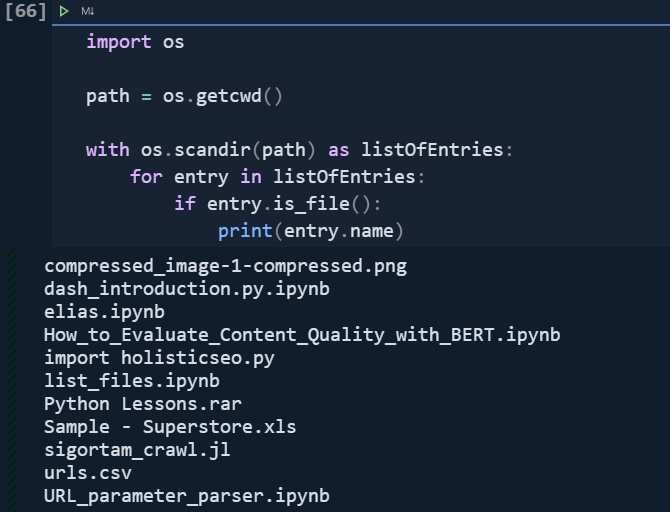


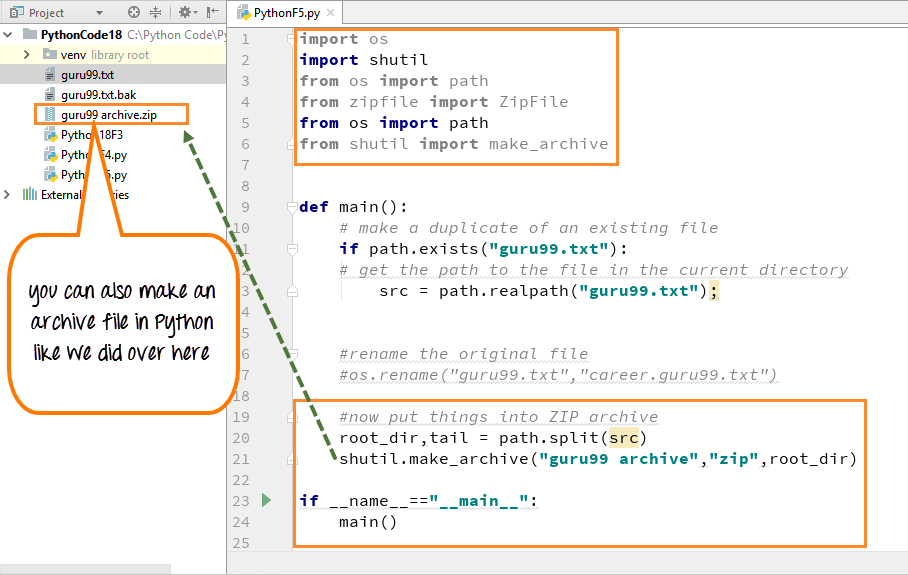
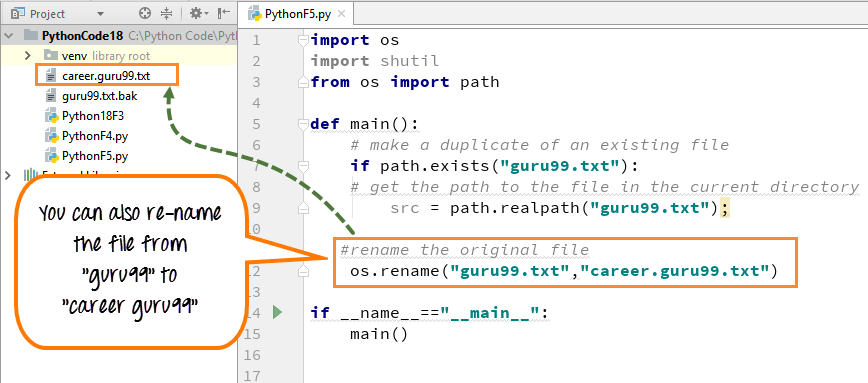

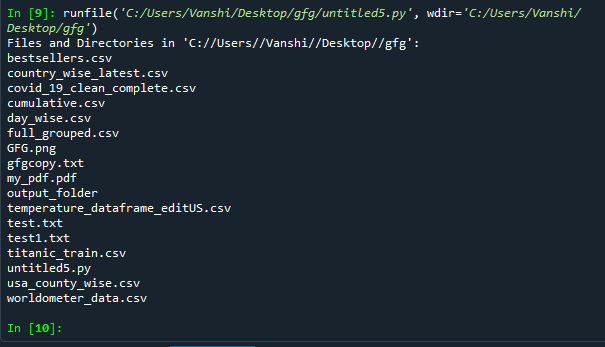






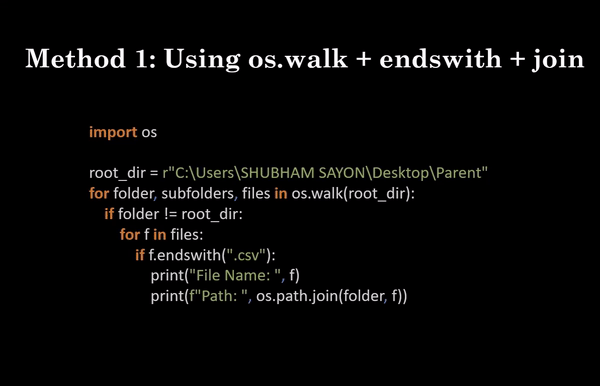




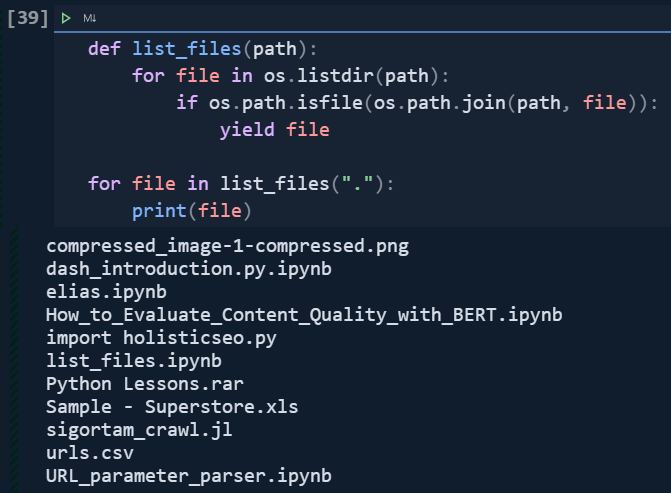

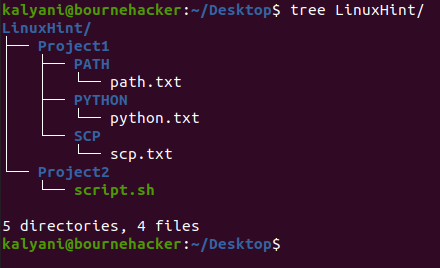


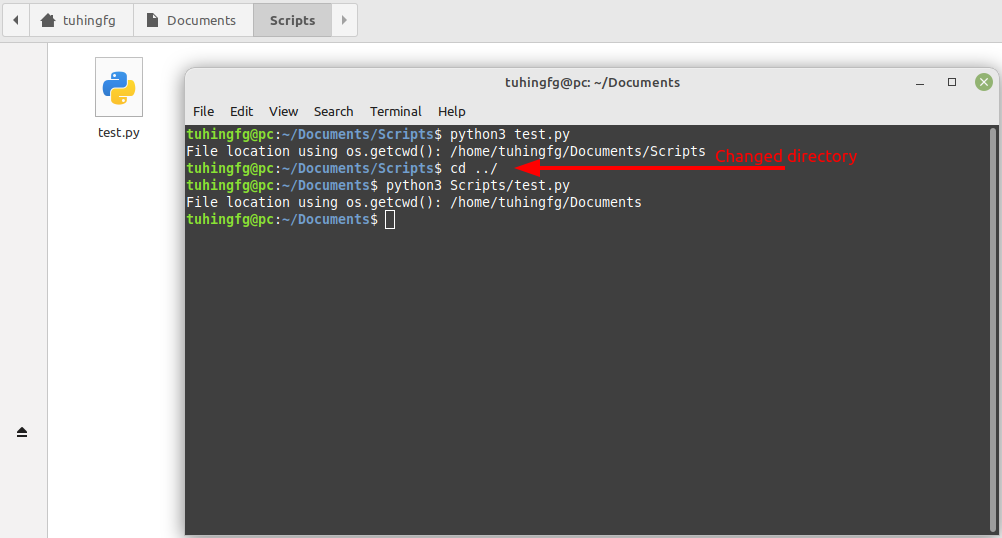




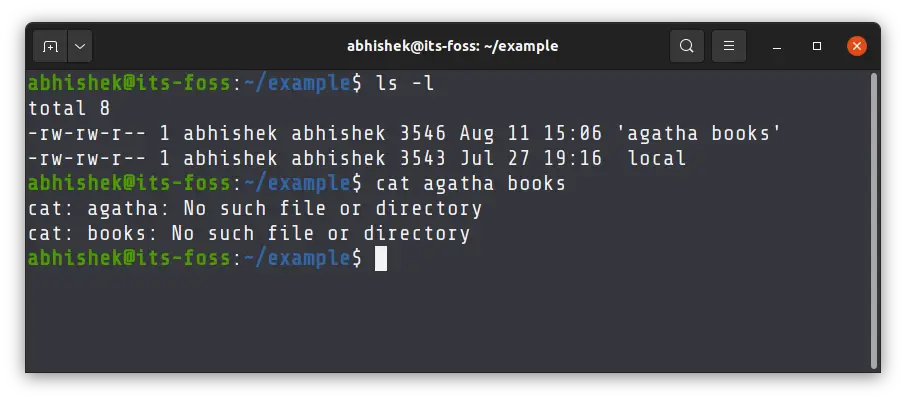

![FileNotFoundError: [Errno 2] No such file or directory: 'FSnm.png' - 🚀 Deployment - Streamlit Filenotfounderror: [Errno 2] No Such File Or Directory: 'Fsnm.Png' - 🚀 Deployment - Streamlit](https://global.discourse-cdn.com/business7/uploads/streamlit/optimized/2X/7/7a62f10889b442beaf7a1b533406adf4e2b4f636_2_1024x506.png)










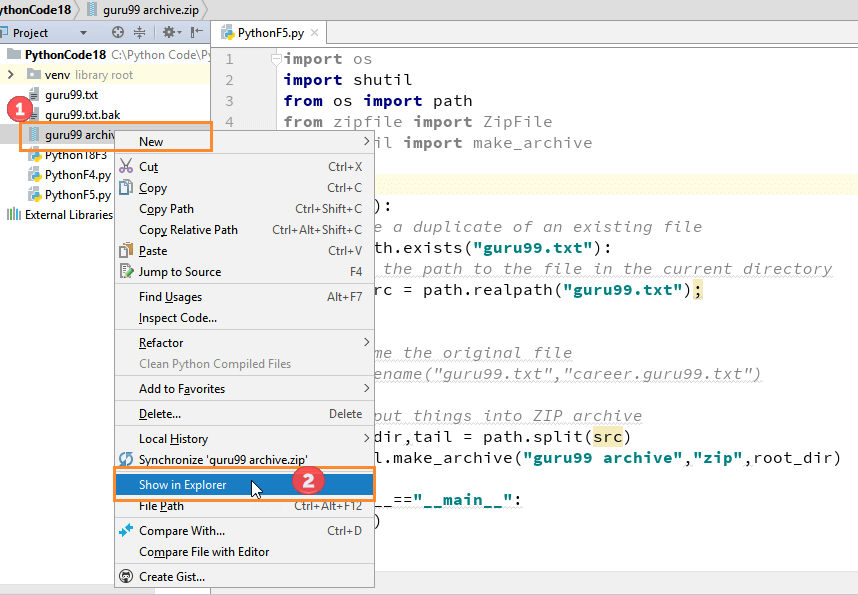


Article link: python get filename from path.
Learn more about the topic python get filename from path.
- Python Program to Get the File Name From the … – Programiz
- Python Program to Get the File Name From the File Path
- Extract file name from path, no matter what the os/path format
- 03 Methods to Get Filename from Path in Python (with code)
- How to Extract filename from a given path in C# – GeeksforGeeks
- Get the filename, directory, extension from a path string in …
- Get Filename Without Extension in Python – Spark By {Examples}
- File Searching using Python – Tutorialspoint
- 3 Easy Ways to Get Filename from Path in Python – AppDividend
- Get the filename, directory, extension from a path string in …
- How To Get File Name From A Path In Python?
- How to get the file name from the file path in Python
- How to extract and get a file name from a path in Python?
See more: nhanvietluanvan.com/luat-hoc